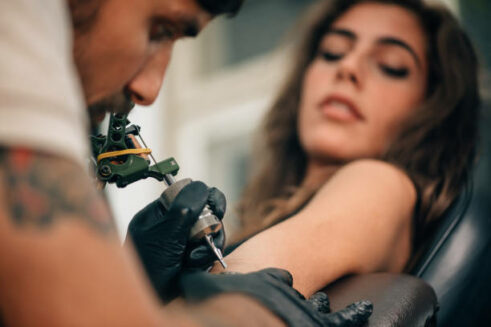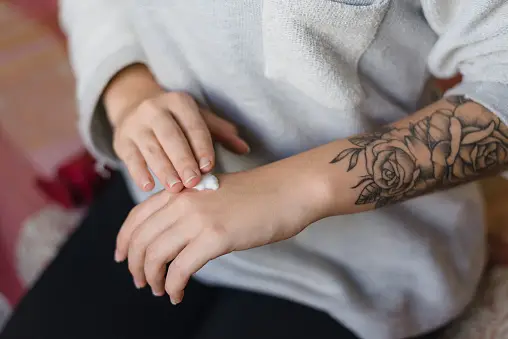Tattoos have gained tremendous popularity in recent years, with more and more individuals opting to get inked as a form of self-expression. However, the process can often be uncomfortable and painful, leading to the increased demand for numbing creams during tattoo sessions. While these creams can greatly alleviate discomfort, it is crucial to understand the ingredients used and consider the possibility of allergic reactions.
In this blog, we will explore the importance of comprehending tattoo numbing ingredients and their potential to cause allergies, enabling you to make informed decisions and prioritize your safety.
Understanding Tattoo Numbing Creams
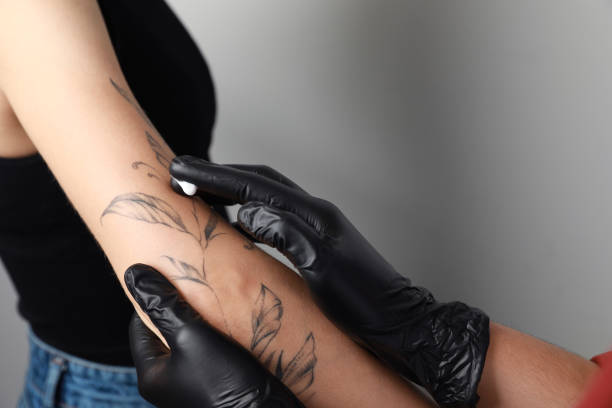
Tattoo numbing creams, increasingly popular for relieving tattoo discomfort, are tailored to dull pain during the tattooing process, ensuring a more comfortable experience.
Various types of these creams exist, with lidocaine being a common ingredient, acting as a temporary local anesthetic to numb the skin. Some may also feature prilocaine or benzocaine, offering similar numbing effects by blocking nerve signals that transmit pain to the brain.
In the application process, these creams are typically used before the tattooing begins. Preparing the tattoo area is crucial, ensuring cleanliness. The cream is generously applied, left on for about 30 minutes, allowing the numbing agents to take effect.
Common application areas include sensitive or painful regions like the ribcage, inner arm, or bony areas, although specifics may vary based on individual pain tolerance.
While tattoo numbing creams alleviate discomfort, they don’t entirely eliminate pain. Pain relief levels vary among individuals, influenced by factors like pain tolerance and the tattooing technique employed.
How Do Tattoo Numbing Creams Work?

Tattoo numbing creams, a popular choice for those seeking pain relief during tattoos, function by blocking nerve signals and reducing pain sensation for a more comfortable experience.
The active ingredients, like lidocaine or benzocaine, fall under local anesthetics, inhibiting pain signal transmission from nerves to the brain. Applied to the skin, these creams are absorbed into the outer layer (epidermis) and delve deeper into the dermis, where tattooing occurs. Absorption takes 20 to 60 minutes, varying with cream type and individual skin.
Despite temporary relief, note potential side effects: skin irritation (redness, itching, swelling), and allergic reactions, especially if allergic to similar substances. Improper use might lead to systemic absorption, causing dizziness, lightheadedness, or numbness elsewhere. Follow cream instructions, and consult a professional for unexpected symptoms.
Some tattoo artists caution against numbing creams, citing impacts on the tattooing process. These creams can firm the skin, complicating the artist’s work. Creams with vasoconstrictors may affect healing by reducing blood flow to the tattooed area.
In conclusion, tattoo numbing creams ease pain during tattoos by blocking nerve signals. Despite benefits, understanding potential side effects and risks is crucial.
Allergic Reactions to Tattoo Numbing Creams
Tattoo numbing creams, popular for minimizing tattoo discomfort, carry potential risks, specifically allergic reactions. Distinguishing between irritation and a true allergic reaction is key.
Irritation, a temporary response to substances in numbing creams, results in redness, itching, or mild discomfort, resolving shortly after cream removal. In contrast, a genuine allergic reaction, triggered by a specific ingredient, involves the immune system launching a more intense and persistent response, even after cream removal.
Recognizing allergic reaction symptoms is crucial. Severe itching, swelling, blistering, hives, or a rash may occur, with severe cases showing difficulty breathing or dizziness, requiring immediate medical attention.
While generally safe, tattoo numbing creams carry a low risk of allergic reactions, particularly in individuals sensitive to ingredients like lidocaine or benzocaine. Conducting a patch test before use helps identify potential allergies, ensuring a safe tattooing experience.
Identifying Allergenic Ingredients
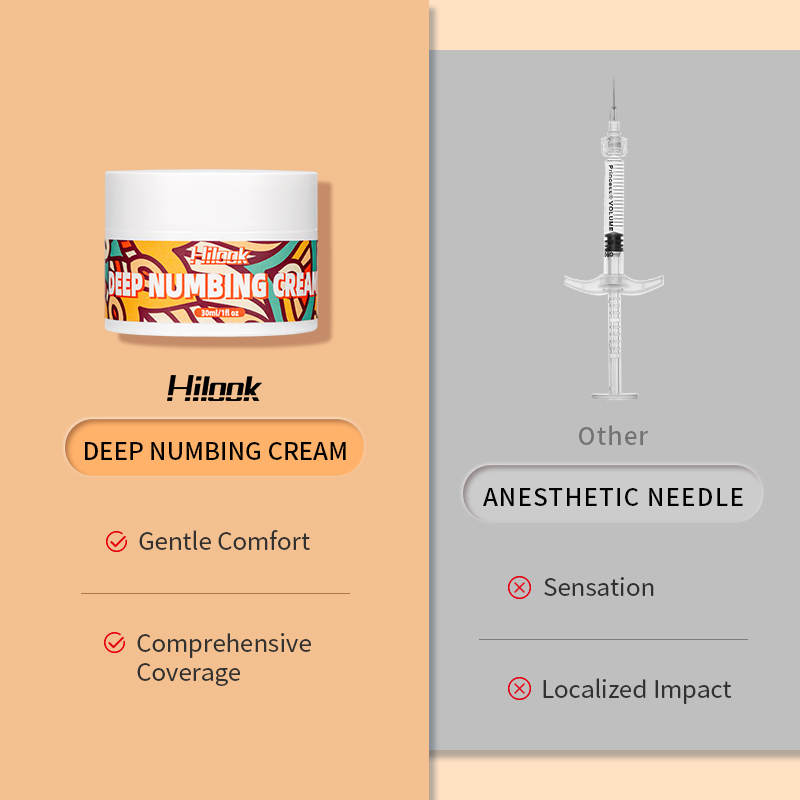
Identifying Allergenic Ingredients
Allergies pose a concern with tattoo numbing creams, necessitating awareness of potential triggers before application. We’ll outline common allergenic ingredients, discuss factors increasing susceptibility, and provide tips on identifying these elements.
Common Allergenic Ingredients
- Lidocaine: Effective but may cause allergic reactions like rash, itching, or swelling in some individuals.
- Benzocaine: Similar to lidocaine, it can lead to allergic skin reactions, such as redness, hives, or blistering.
- Tetracaine: This local anesthetic may provoke allergic responses, resulting in skin irritation or difficulty breathing.
- Prilocaine: Rarely, it can trigger allergic contact dermatitis in sensitive individuals.
Individuals More Prone to Allergies
While allergies can affect anyone, heightened susceptibility is linked to:
- Personal or family history of allergies
- Previous allergic reactions to similar products or ingredients
- Asthma, eczema, or other atopic conditions
- Weakened immune system
Tips for Label Reading and Artisanal Tattoo Products
Ensure safety and minimize allergy risks with these label reading tips:
- Clear ingredient lists: Manufacturers must provide comprehensive ingredient lists.
- Familiarize with common allergens: Prior knowledge of allergenic ingredients aids identification on labels.
- Cross-check with personal allergens: Verify that ingredients causing allergies are absent in the numbing cream.
- Seek medical advice if uncertain: Consult healthcare professionals for a safe choice if uncertain about any ingredient or its potential allergic effects.
Additionally, with the rise of artisanal tattoo products, more tattoo artists are customizing their own tattoo numbing creams and private label tattoo aftercare. This allows for clearer and more personalized labeling, ensuring customers receive explicit instructions and warnings.
Tattoo Numbing Cream Allergies: Treatment and Management
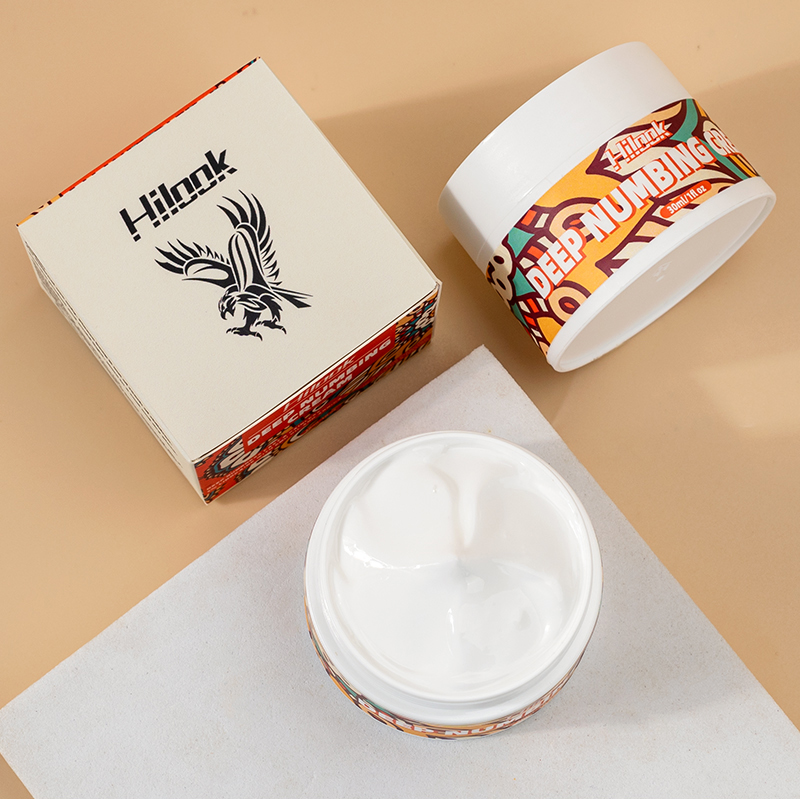
Using numbing cream before a tattoo is common for pain reduction, but allergic reactions can occur. Here, we explore treatment, the importance of professional advice, and tips for managing and preventing future reactions.
If an allergic reaction occurs, consult a medical professional for an accurate diagnosis. Over-the-counter antihistamines or corticosteroid creams may be suggested to alleviate symptoms. Severe cases may require prescription-strength options or oral medication to suppress the reaction.
Professional advice is crucial, avoiding self-diagnosis. A healthcare provider identifies the allergen, offers suitable treatments, and monitors recovery, especially in severe cases with serious symptoms.
Managing an allergic reaction involves avoiding irritation, keeping the area clean, and moisturizing with hypoallergenic products. Applying a cool compress can offer relief. Prevention includes performing patch tests before using any numbing cream, reading ingredient lists, and consulting a healthcare professional if you have allergies.
Cross-Reactivity with Tattoo Inks
Choosing numbing cream for a less painful tattoo is common, but allergic reactions are possible. Explore treatment options, the importance of professional advice, and tips for managing and preventing future reactions.
In the event of an allergic reaction to tattoo numbing cream, seek prompt medical consultation for an accurate diagnosis. Over-the-counter antihistamines or topical corticosteroids may be recommended for mild symptoms, while severe cases may require prescription-strength corticosteroids or oral medication to suppress the reaction.
Professional advice is crucial. Self-diagnosis and treatment at home may seem tempting, but a healthcare provider ensures an accurate diagnosis, identifies allergens, and prescribes suitable treatment. Severe reactions, like difficulty breathing or facial swelling, necessitate immediate medical attention.
Management and prevention are key. Avoid scratching the affected area, keep the skin clean and moisturized with hypoallergenic products, and steer clear of potential irritants. Applying a cool compress or taking a lukewarm bath can also offer relief.
For prevention, always perform a patch test before using any numbing cream. Apply a small amount to an inconspicuous area, wait 24 hours for reactions, and carefully check ingredient lists for known allergens. If allergies are a concern, consult a medical professional before using numbing cream.
Preventing Allergic Reactions to Tattoo Numbing Creams

Using tattoo numbing cream can ease tattoo discomfort, but precautions are crucial for those with sensitive skin or allergy history. Follow these tips for a safe tattooing experience:
- Patch Testing: Before initial use, conduct a patch test. Apply a small amount to your inner forearm, wait 24 hours, and proceed if there’s no adverse reaction. If discomfort arises, avoid the cream and consider alternatives.
- Consult Professionals: Seek advice from a dermatologist or experienced tattoo artist. They can recommend creams suitable for your skin, identify potential allergens, and suggest hypoallergenic options, minimizing allergy risks.
- Alternative Pain Management: Explore alternative methods for pain relief. Ice therapy, applying ice to the tattoo area before and during the process, can numb the skin. Consider topical anesthetics with different ingredients to avoid specific allergens.
Prioritizing these measures reduces the chances of allergic reactions to tattoo numbing creams. Patch testing, professional guidance, and alternative strategies ensure a safer and more enjoyable tattoo experience, especially for allergy-prone individuals. Always prioritize your health and well-being in body art decisions.
Conclusion
This post discussed common tattoo numbing cream ingredients, stressing their allergy potential. Understanding these ingredients is crucial for a safe tattoo experience. We highlighted risks with Lidocaine and Benzocaine, urging patch tests and professional advice. Safety is key; consult a tattoo artist or dermatologist for guidance. Share experiences in the comments for a safety-focused community. Ensure a safe tattoo process through research and consideration.


